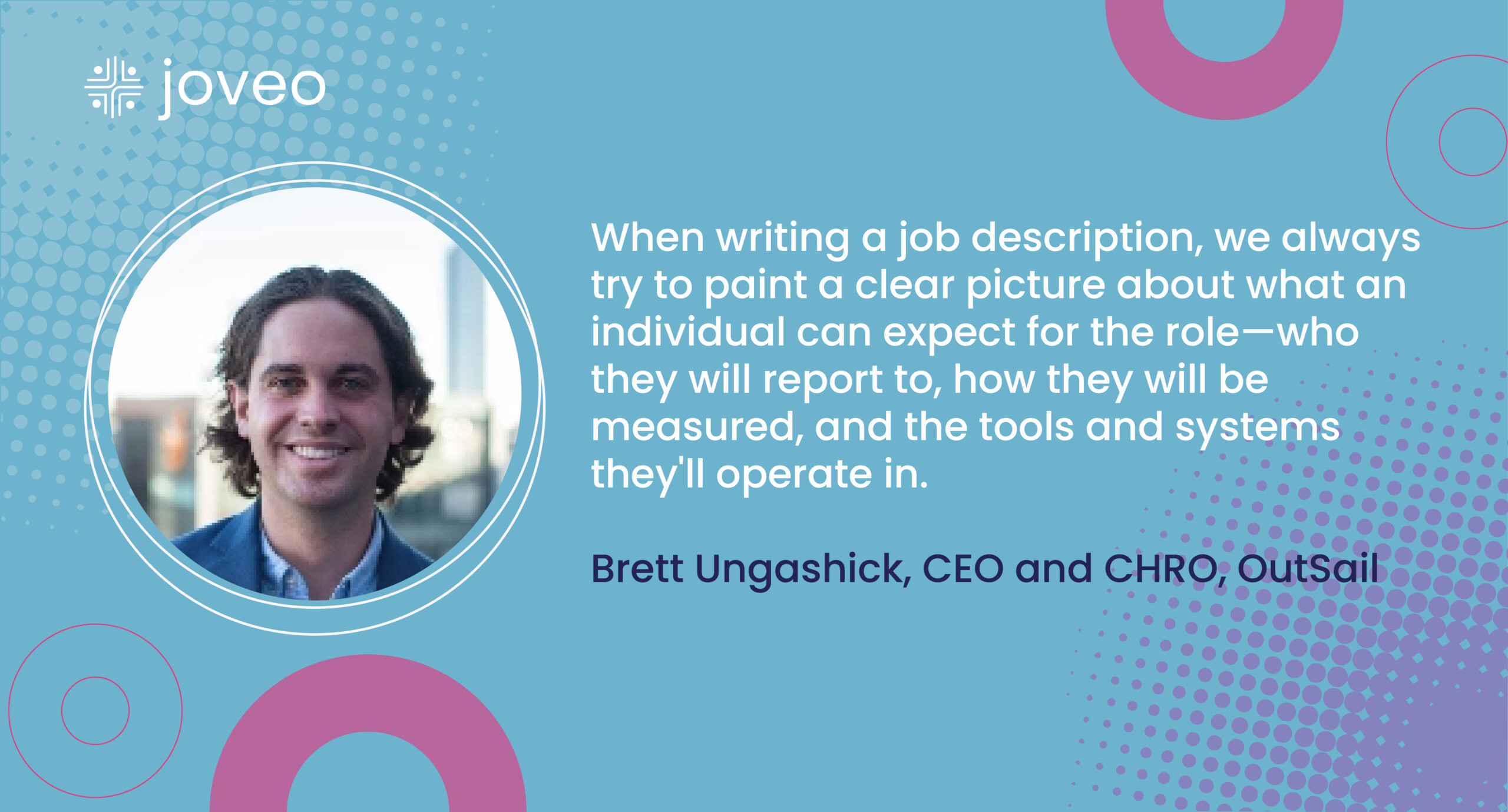From being as transparent as possible to first learning about the role yourself, here are 10 answers to the question, “What are your most effective tips for writing great job descriptions?”
Convey Details With Transparency
What turns a good job description into a great one is the level of detail and transparency you’re willing to provide from the outset. Define what the candidate should expect regarding realistic day-to-day tasks, and also what they need to know about the onboarding process.
Be as transparent as possible to attract the perfect talent for the role.
Wendy Makinson, HR Manager, Joloda Hydraroll
Highlight Growth Opportunities
This might include showcasing employee success stories or detailing paths to senior leadership and career advancement. Showcase why this role is important to your organization’s mission and how it fits into the overall team structure.
Highlighting these elements will help draw in highly-qualified candidates looking for an opportunity to grow their careers. Additionally, use clear language and avoid jargon to ensure that candidates from all backgrounds can understand the job opportunity.
Mariusz Michalowski, Community and Career Expert, Spacelift
Paint a Clear Picture While Still Being Aspirational
It can be very frustrating to come across job descriptions that are chock-full of buzzwords and “skills” but low on detail about the actual day-to-day. When writing a job description, we always try to paint a clear picture about what an individual can expect for the role—who they will report to, how they will be measured, and the tools and systems they’ll operate in.
Since we’re targeting people with growth mindsets, one other thing that we like to add to our job descriptions is details about what other adjacent opportunities exist beyond this role.
Brett Ungashick, CEO and CHRO, OutSail

Describe Your Dream Employee, Not a Rote List of Responsibilities
As a recruiter, I deal with job descriptions day in and day out. My top tip? Describe the worker, not the role.
A list of responsibilities or skills is intangible and hard to imagine for candidates. Instead, create a character: the perfect employee for the position. What type of personality do they have, what is their background, and where does their passion lie?
Treating it like a creative writing exercise benefits not only the applicant. Framing it this way helps hiring managers bridge the gap between instructions from the C-suite and the real-life experience of looking for a worker.
Debbie Winkelbauer, CEO, Surf Search
Write Clearly, Avoid Jargon
My #1 tip for writing great job descriptions is to make sure they are succinct yet thorough. A good way to accomplish this is by using clear language that everyone can understand and avoiding industry-specific jargon.
For example, instead of saying “maintaining web services,” you could explain the kind of maintenance in more detail: “updating content regularly and troubleshooting any technical issues when they arise.” Taking the time to do this helps ensure your reader receives all the information needed to make their decision!
Grace He, People and Culture Director, teambuilding.com
Stick With Honesty
My top tip for writing great job descriptions is honesty and transparency. HR professionals and recruiters should avoid common mistakes that end up wasting both the company’s and candidates’ time. Providing a negative candidate experience not only reflects badly on the recruiter, but also on the company.
Instead, be transparent about the challenges and requirements of the role by highlighting the skills and experience that are truly necessary for success.
For example, you can suggest what kind of candidates with various backgrounds and experience would fit well within the company to attract a larger and more diverse pool of talent. Additionally, provide a reasonable salary range and be upfront about your interview process and timeline. Doing this will help attract the right candidates and set realistic expectations from the get-go.
Samuel Johns, CPRW and Career Counselor, Resume Genius
Add Personality
What’s it REALLY like to work at your company? Leave out the fluffy language and identify your company’s true differentiator. Consider that in your voice and tone throughout the job description. Copying and pasting from a template won’t cut it. Candidates are tired of seeing the same dull text on the screen. In the job description, offer an inside look—you’ll likely attract the right candidates.
Kelli Anderson, Career Coach, Resume Seed

Focus on Specificity
Job descriptions should clearly outline the responsibilities and requirements of the position, as well as the qualifications and skills required for success. Avoid vague or ambiguous language, as this can lead to confusion and misunderstandings later in the hiring process.
Instead, be specific and provide details about the key duties and responsibilities of the job, as well as any essential qualifications, experience, or skills required. Use concrete language and examples to help candidates understand what they’ll be doing on a day-to-day basis and what will be expected of them in the role.
Kimberley Tyler-Smith, VP, Strategy and Growth, Resume Worded
Use Bias-free Language
Job descriptions should not include words or phrases that discourage or exclude individuals based on gender, ethnicity, age, physical ability, or sexual orientation. This also means being aware of unconscious biases and avoiding generalizations, such as “young” or “energetic.” Instead, use neutral language that focuses on the skills and qualifications required for the role. In the same vein, use gender-neutral pronouns and avoid gendered language, such as “he” or “she.”
By using unbiased language throughout your job descriptions, you create an environment of respect and openness in your organization. This can be a great way to attract qualified applicants who may not have applied before because of biased language in the job descriptions. Additionally, being mindful of language in your job postings sets a strong precedent for an inclusive workplace culture.
Darren Shafae, Founder, ResumeBlaze

Understand the Role and Required Skills
The key to a really effective job description is to thoroughly understand the role and the skills required, so you can create a comprehensive job description that accurately reflects the position and helps you find the right candidate.
By doing so, you ensure that candidates clearly understand what the role entails and what skills and experience are necessary to succeed in the position. This not only helps you attract the right talent but also ensures that the selected candidate is a good fit for the role and the organization.
Lilia Koss, Community Manager, Facialteam
Let’s talk about how Joveo can help you get the most bang for your talent acquisition buck. And follow us on Twitter and LinkedIn, where we’re always working to help you get the most out of your recruitment advertising.















